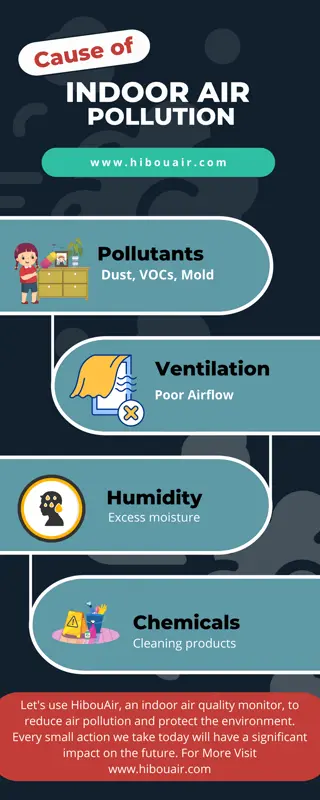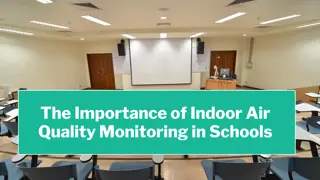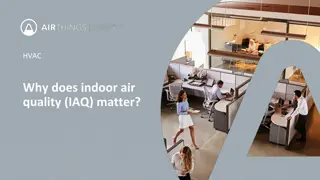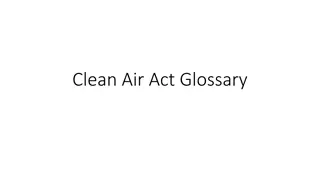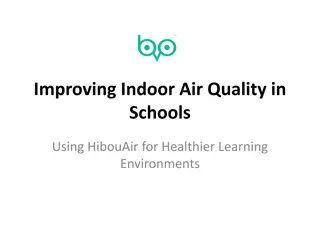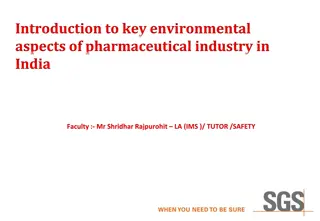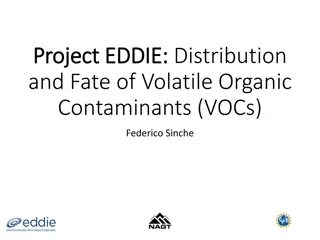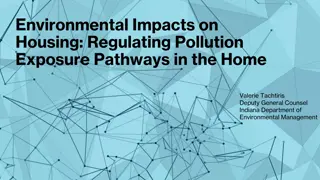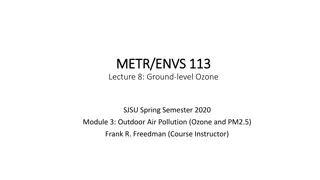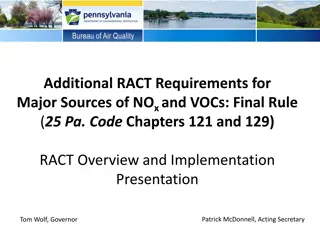Advancements in Chemical Mechanisms for Air Quality Management
Daniel Jacob and team have been enhancing chemical mechanisms in the GEOS-Chem model to support US air quality management. Ongoing work includes developing new mechanisms for aromatic VOCs, tropospheric halogens, mercury redox, adaptive mechanism reduction, machine learning applications, and unifica
0 views • 19 slides
Causes of Indoor Air Quality
Common indoor air pollutants such as dust, VOCs, and mold, along with poor ventilation, excess humidity fostering mold growth, and chemicals from cleaning products, significantly impact indoor air quality. Managing these factors is essential for crea
3 views • 1 slides
The Importance of Indoor Air Quality Monitoring in Schools
Ensuring health and well-being in schools is crucial. Indoor air quality monitoring devices track pollutants like CO2 and VOCs, providing real-time data for immediate action. This improves air quality, enhances concentration, reduces absenteeism, and
1 views • 9 slides
Importance of Indoor Air Quality in HVAC Systems
Indoor air quality (IAQ) is crucial for HVAC systems as it directly impacts health, productivity, and overall well-being. Poor IAQ leads to health issues, decreased productivity, and higher absenteeism. The selection of HVAC equipment must prioritise energy efficiency, humidity control, and IAQ. The
0 views • 13 slides
Overview of Clean Air Act: Criteria Pollutants, NAAQS, HAPs, VOCs
The Clean Air Act establishes standards for criteria pollutants like ozone and particulate matter to protect human health. NAAQS set uniform air quality goals, while Hazardous Air Pollutants (HAPs) pose threats such as cancer. Volatile Organic Compounds (VOCs) and National Emission Standards for HAP
0 views • 26 slides
Overview of Air Emissions and Quality Assessment in Shale Gas Development
The presentation discusses the estimation of air emissions from shale gas development and production in North Carolina, highlighting the importance of analyzing emissions from oil and gas activities and associated truck traffic. The process involves building emissions inventory, photochemical modeli
0 views • 22 slides
Improving Indoor Air Quality in Schools
Improve indoor air quality in schools with HibouAir, a real-time monitoring device for CO2, PM, VOCs, and more. Ensure a healthier learning environment. For more visit at \/\/hibouair.com
1 views • 7 slides
Environmental Aspects of Pharmaceutical Industry in India
The pharmaceutical industry in India poses various environmental hazards through manufacturing processes, handling of hazardous chemicals, waste disposal, and natural calamities. Hazardous waste types, sources of hazards, and examples of chemical waste highlight the importance of implementing effect
0 views • 31 slides
Understanding VOCs: Distribution, Fate, and Impacts on Air Quality
This project delves into the distribution and fate of Volatile Organic Contaminants (VOCs), emphasizing their impact on air quality. It covers VOC sources, characteristics, health effects, and air pollution monitoring. The importance of regulating VOCs for human health and the environment is highlig
0 views • 21 slides
Understanding Environmental Impacts on Housing: Regulating Pollution Exposure Pathways
Explore the regulatory framework for managing pollutant exposure in homes, highlighting the complexity of exposure pathways and the importance of assessing risks based on toxicity and exposure levels. The discussion covers various exposure pathways such as drinking water, air quality, dermal contact
0 views • 14 slides
Understanding Ground-Level Ozone Pollution: Health Effects and Historical Perspective
Ground-level ozone, a secondary pollutant formed by NOx and VOCs, poses significant health risks such as lung inflammation and respiratory illnesses. This article delves into the adverse effects of ozone inhalation, regulatory efforts, and a historical perspective, including the alarming levels reco
0 views • 24 slides
Implementation of Additional RACT Requirements for NOx and VOCs
This presentation outlines the final RACT requirements for major sources of nitrogen oxides (NOx) and volatile organic compounds (VOCs) in Pennsylvania, focusing on the purpose of the RACT II rulemaking, re-evaluation of RACT due to updated ozone standards, and an overview of the definitions and reg
0 views • 48 slides

